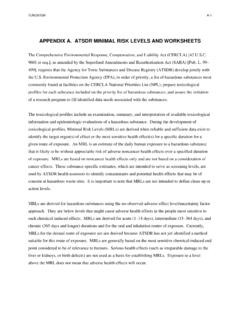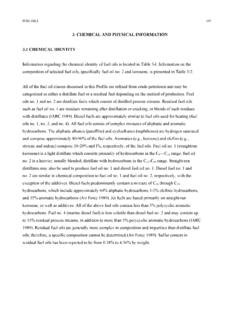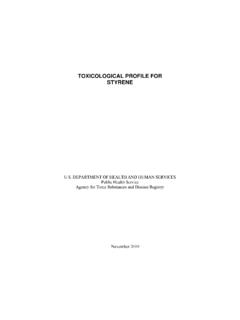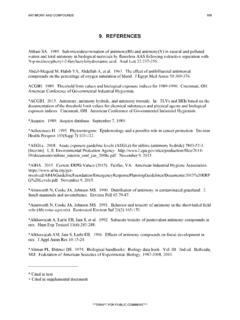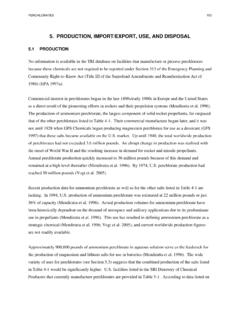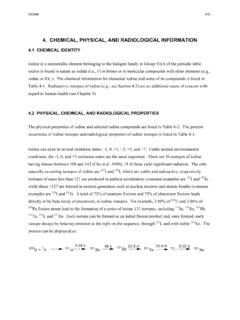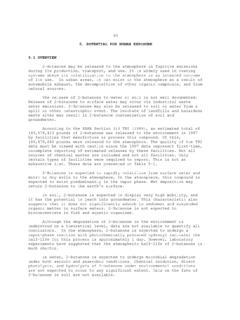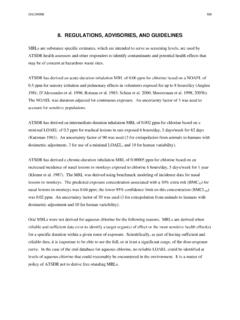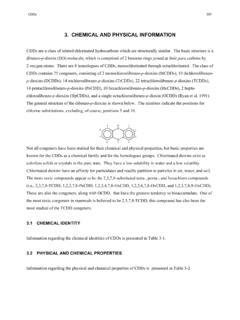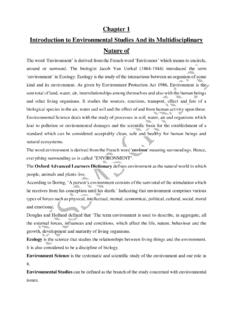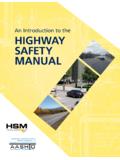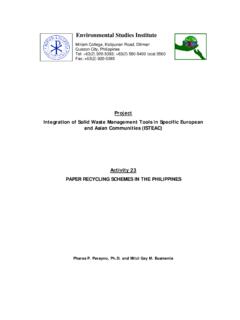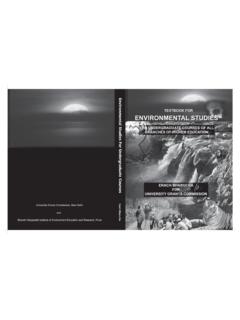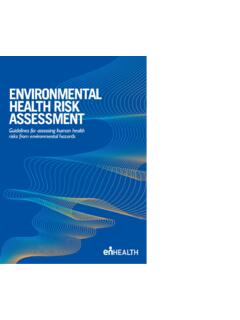Transcription of Toxicity of Polycyclic Aromatic Hydrocarbons (PAHs ...
1 Agency for Toxic Substances and Disease Registry (ATSDR). Case studies in environmental Medicine Toxicity of Polycyclic Aromatic Hydrocarbons ( pahs ). Course: WB 1519. Original Date: July 1, 2009. Expiration Date: July 1, 2012. Table of Contents How to Use This Course .. 3. Initial 5. What Are Polycyclic Aromatic Hydrocarbons ( pahs )? .. 9. Where Are Polycyclic Aromatic Hydrocarbons ( pahs ) Found? .. 12. What Are the Routes of Exposure for Polycyclic Aromatic Hydrocarbons ( pahs )? .. 15. Who Is at Risk of Exposure to Polycyclic Aromatic Hydrocarbons ( pahs )? .. 19. What Are the Standards and Regulations for Polycyclic Aromatic Hydrocarbons (PAH). Exposure?.. 22. What Is the Biologic Fate of pahs in the Body?
2 27. How Do pahs Induce Pathogenic Change? .. 31. What Health Effects Are Associated With PAH Exposure?.. 34. Clinical Assessment .. 38. How Should Patients Exposed to pahs Be Treated and Managed?.. 43. What Instructions Should Be Given to Patients to Prevent Overexposure to pahs ?.. 46. Sources of Additional 49. Assessment and 53. Literature Cited .. 59. Key Concepts Because of combustion of fossil fuels and organic waste, pahs are ubiquitous in the environment studies show that certain PAH metabolites interact with DNA and are genotoxic, causing malignancies and heritable genetic damage in humans. In humans, heavy occupational exposure to mixtures of pahs entails a substantial risk of lung, skin, or bladder cancer.
3 About This and This educational case study document is one in a series of self- Other Case studies instructional modules designed to increase the primary care in environmental provider's knowledge of hazardous substances in the environment Medicine and to promote the adoption of medical practices that aid in the evaluation and care of potentially exposed patients. The complete series of Case studies in environmental Medicine is located on the ATSDR Web site at In addition, the downloadable PDF version of this educational series and other environmental medicine materials provides content in an electronic, printable format, especially for those who may lack adequate Internet service.
4 How to Apply for See Internet address for more information about continuing medical education credits, and Receive Continuing continuing nursing education credits, and other continuing education Education Credit units. Page 1 of 68. Agency for Toxic Substances and Disease Registry (ATSDR). Case studies in environmental Medicine Toxicity of Polycyclic Aromatic Hydrocarbons ( pahs ). Acknowledgements We gratefully acknowledge the work that the medical writers, editors, and reviewers have provided to produce this educational resource. Listed below are those who have contributed to development of this version of the Case Study in environmental Medicine. Please Note: Each content expert for this case study has indicated that there is no conflict of interest to disclose that would bias the case study content.
5 ATSDR Authors: Kim Gehle, MD, MPH. CDC/ATSDR Planners: Charlton Coles, ; John Doyle, MPA;. Bruce Fowler, PhD.; Kimberly Gehle, MD; Sharon L. Hall, ;. Michael Hatcher, DrPH; Kimberly Jenkins, BA; Ronald T. Jolly;. Barbara M. Riley, RN; Delene Roberts, MSA; Oscar Tarrago, MD, MPH, CHES; Brian Tencza CDC/ATSDR Commenters: Moiz Mumtaz, ; Frank C. Schnell, PhD, DABT. NIOSH commenter: David Trout MD, MPH. External Peer Reviewers: Scott Phillips, MD, FACP, FACMT; Gary R. Krieger, MD, MPH, DABT; Janet Kester, PhD, DABT; Ellen Remenchik, MD, MPH. Disclaimer CDC and ATSDR, our planners, and our presenters wish to disclose they have no financial interests or other relationships with the manufacturers of commercial products, suppliers of commercial services, or commercial supporters.
6 Presentations will not include any discussion of the unlabeled use of a product or a product under investigational use. There was no commercial support received for this activity. Department of Health and Human Services Agency for Toxic Substances and Disease Registry Division of Toxicology and environmental Medicine environmental Medicine and Educational Services Branch Page 2 of 68. Agency for Toxic Substances and Disease Registry (ATSDR). Case studies in environmental Medicine Toxicity of Polycyclic Aromatic Hydrocarbons ( pahs ). How to Use This Course The goal of Case studies in environmental Medicine (CSEM) is to increase introduction the primary care provider's knowledge of hazardous substances in the environment and to help in evaluation and treating of potentially exposed patients.
7 This CSEM focuses on the Toxicity of Polycyclic Aromatic Hydrocarbons . Available Two versions of the Toxicity of Polycyclic Aromatic Hydrocarbons CSEM. are available. Versions The HTML version provides content through the Internet. The downloadable PDF version provides content in an electronic, printable format, especially for those who may lack adequate Internet service. The HTML version offers interactive exercises and prescriptive feedback to the user. To make the most effective use of this course. Instructions Take the Initial Check to assess your current knowledge about the Toxicity of Polycyclic Aromatic Hydrocarbons . Read the title, learning objectives, text, and key points in each section.
8 Complete the progress check exercises at the end of each section and check your answers. Complete and submit your assessment and posttest response online if you wish to obtain continuing education credit. Continuing education certificates can be printed immediately upon completion. Instructional This course is designed to help you learn efficiently. Topics are clearly Format labeled so that you can skip sections or quickly scan sections you are already familiar with. This labeling will also allow you to use this training material as a handy reference. To help you identify and absorb important content quickly, each section is structured as follows: Section Element Purpose Title Serves as a focus question that you should be able to answer after completing the section Learning Objectives Describes specific content addressed in each section and focuses your attention on important points Text Provides the information you need to answer the focus question(s).
9 And achieve the learning objectives Key Points Highlights important issues and helps you review Progress Check Enables you to test yourself to determine whether you have mastered the learning objectives Answers Provide feedback to ensure you understand the content and can locate information in the text Page 3 of 68. Agency for Toxic Substances and Disease Registry (ATSDR). Case studies in environmental Medicine Toxicity of Polycyclic Aromatic Hydrocarbons ( pahs ). Learning Upon completion of the Toxicity of Polycyclic Aromatic Hydrocarbons Objectives (PAH) CSEM, you will be able to Content Area Objectives Overview explain what pahs are describe the properties of pahs identify where pahs are found Exposure Pathways identify routes of exposure to pahs Who is at Risk identify the populations at high risk for exposure to pahs Standards and describe the Occupational Safety and Health Regulations Administration's permissible exposure limit (PEL) for pahs describe the environmental Protection Agency's maximum contaminant level (MCL)
10 For pahs in drinking water Biological Fate describe the biologic fate of pahs in the body Pathogenic Changes describe how pahs are believed to induce pathogenic changes Health Effects describe health effects associated with PAH exposure Clinical Assessment describe typical signs and symptoms of patients with acute PAH exposure describe typical signs and symptoms of patients with chronic PAH exposure describe important elements of the exposure history describe the focus of the physical examination describe tests used to assist in evaluation of patients exposed to pahs Treatment and identify strategies for managing patients with chronic PAH. Management exposure Patient Education and describe care advice for the patient exposed to pahs Counseling Page 4 of 68.
